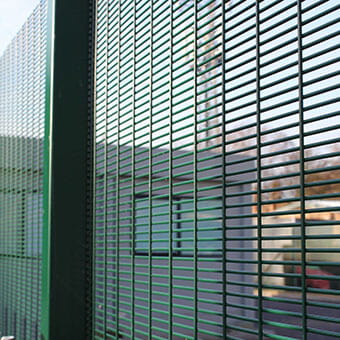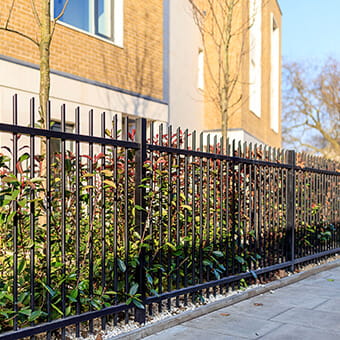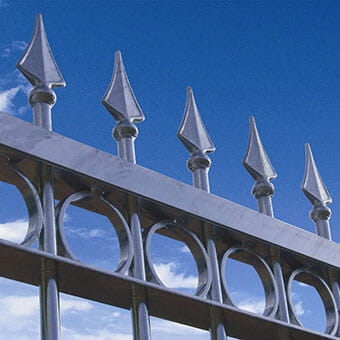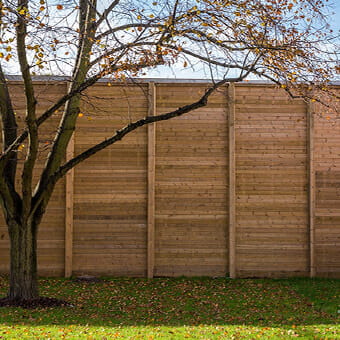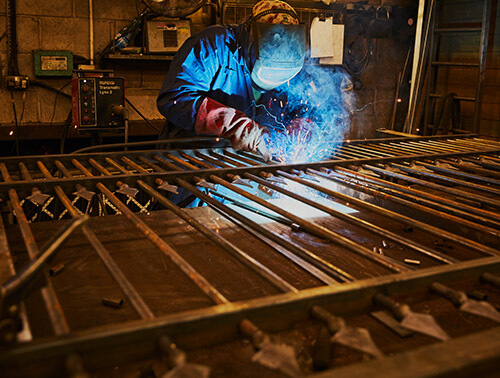Our other sites:
- What is spontaneous crime?
- Reducing the risk of vandalism
- Vandalism in public playgrounds
- Preventing graffiti
- Protecting against theft
Spontaneous crimes are crimes of opportunity and include incidents like theft, vandalism, trespassing, and arson – all crimes which fencing and gates when used in various ways can help protect against.
Spontaneous crime can affect any site including a domestic home, school, sports pitch, playground, places of worship, or heritage property; commonly properties that do not naturally need high security fencing and are sometimes open to the public. Fencing around these places needs to strike a balance between creating a welcoming and liveable environment which doesn’t detract from the appearance or functionality of the property in question, while providing security or demarcation.
Heritage properties and listed buildings are often targeted and typically succumb to the most disruption and damage due to their age and status, costing more and requiring a lengthy approval process to properly repair them. Unfortunately, installing a tall security fence around these sites is not appropriate as they are generally open to the public to view or visit. Sites include statues and monuments, stately homes, museums, castles, places of worship, and gardens.
Reducing Vandalism
Vandalism can be a risk for any site, but again can be significantly more disruptive and upsetting around places of interest, places of worship, or special monuments, as it is seen as a sign of disrespect. Sometimes it is done as a form of protest but other times it is spontaneous ‘fun’. Generally, a fence installed around the area at risk can help to protect against vandalism, but sometimes the fence is targeted instead, usually out of frustration of not being able to reach the desired target.
We cover fence vandalism and how to reduce it in in more detail here, but as a quick overview, fences can be vandalised in many different ways. Fences are made of a number of components which can be removed – depending on the quality of the construction – such as pales, rails, and even whole panels. At Jacksons we purposely design our fencing with anti-vandal features in mind, looking at all the ways a fence could be damaged. Even if the intention of the vandaliser is not to break into the site for something more sinister, fence vandalism can leave your site vulnerable to opportunistic crime until you have noticed the damage or have a chance to fix it. Passers by may notice the damage and decide to take their chances at getting through the fence to trespass or steal, or innocent passers by may even sustain an injury from sharp components of a damaged fence. Choosing a fence with vandal-proof elements such as concealed and/or tamper-proof fixings, hidden panel-to-post connectors, and welded pale-through-rail construction, will decrease the risk of the fence being vandalised after the perpetrator realises it is too difficult and moves on, or is apprehended.
Vandalism in Public Playgrounds
It is usually always the fence itself that is the subject of vandalism within a public play area. With the equipment inside normally being robust and safe against being vandalised, bored criminals turn to the fence for ‘harmless’ destruction. This is one of the most dangerous types of places to target as broken fencing leaves splintered wood and nails strewn across the ground which can end up injuring children. A robust play area fence made from pressure treated timber, or galvanised and powder coated steel with pale-through-rail construction provides an excellent safety fence around a playground. The fence needs to be strong enough to withstand older children climbing on it and not be easily deconstructed. Fixings should be concealed and/or tamper-proof to stop pales being ripped off, and panels should attach to posts with hidden connectors to prevent them being removed. Nails should never be used in a playground fence due to the danger they present if left laying around.
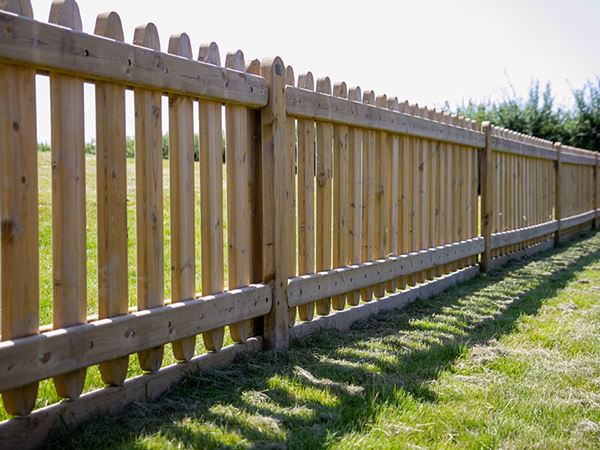
Preventing Graffiti
Graffiti comes in different forms and can affect any building. Larger, more artistic vandalism is often planned ahead with a large canvas. Sometimes the location and audience are part of the plan. Tag graffiti is often more spontaneous and random, often sprayed quickly on a flat, small canvas, in areas where the person is less likely to get caught, and sometimes in areas that are hard to access to make it more ‘impressive’. Planned tagging incidents usually target more significant buildings as way of protest, and sometimes this involves statues or historic properties.
The most effective way to reduce the chance of tagging is to keep someone away from areas (or canvases) that are at risk of or are commonly targeted. For example, if a church wall is a common target with a passer-by being easily able to walk through the grounds and up to a wall/object to spray their tag, the easiest way to reduce this would be a small boundary fence making access to the wall more difficult. The fence needs to fit in with the local environment so that it does not create an eyesore, while at the same time reducing the chance of crime. Metal vertical bar railings coated black would be a common choice to fit a church’s surroundings. It is very unlikely that someone would tag the railings as the surface is not large enough to make an impact and the person would have to access the church grounds through a gate or over the fence, increasing the chance of being caught, so more likely they would look for an easier target. Metal railings can be customised with a range of decorative and functional finials to stop climbing. It is important to think about the type of fence installed; a timber boarded garden fence, while looking attractive, could become the new canvas due to its flat profile, so the style of fence must be chosen carefully. This type of demarcation fence around a church or memorial ground can be enough to deter someone from walking through the ground uninvited, as it can make them feel as if they’re being watched and it also minimises escape routes. It also prevents access to flowerbeds and plants which are sometimes mindlessly or deliberately damaged. We installed low metal railings around a church in Barking to stop people aimlessly or intentionally walking through the church yard. At a church in Luton, we installed taller, decorative metal railings which provided good aesthetics but prevented people getting near to the church during closing hours. The church had a history of being targeted and had suffered a few broken windows before the fence was put up.
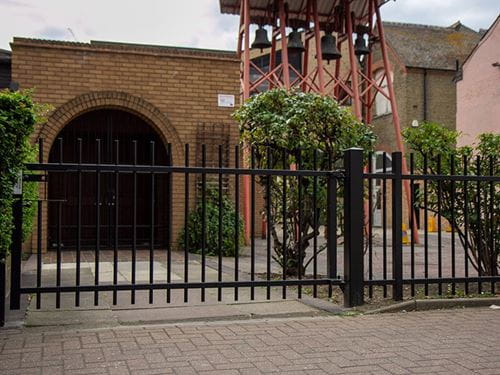
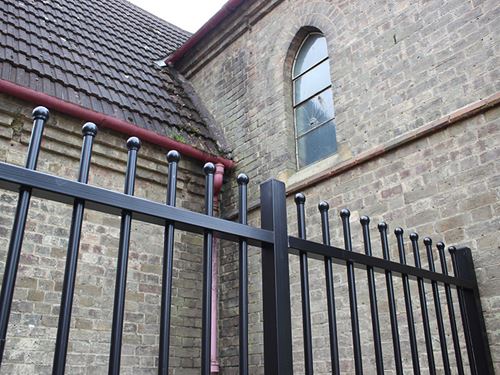
Protecting Against Theft
Theft affects all properties, especially those with valuable items on display or being housed inside. A fence can prevent unauthorised persons accessing a property and when paired with gates can close off and control access points, which helps to stop thieves in their tracks and put them off offending in the first place for fear of being stuck inside the perimeter. Theft of the fence itself is another example of opportunistic crime. With the cost of materials increasing all the time and general inflation costs affecting many, fence panels are often stolen to use or sell for personal gain.
When installing timber fence panels, using timber posts means that panels can be securely fixed with screws, whereas concrete posts do not allow this. As a result, fence panels can be simply lifted out of posts. Mesh panels are lightweight and easy to transport, so they are also targets for theft. Mesh fencing systems that use front facing fixings with torque screws are simple to remove. Our mesh fence panels are secured to posts either with clamp bars or our unique U clips with tamper proof screws on the secure side of the fence.
For help and advice preventing opportunistic crime, contact our team.
Related Products
Jacksons Fencing have a large range of related products, all complete with our 25 year guarantee. If you cannot find the item you are looking for, please do not hesitate to call our friendly sales team.
Related Content
Top
